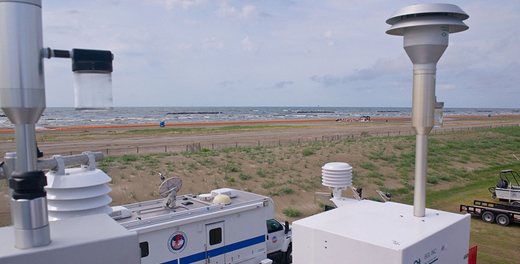The Clean Air Act: Solving Air Pollution Problems with Science and Technology
Scientific Studies Show Air Pollution Harms People's Health and the Environment

National Air Quality Standards Are Based on Science
Under the Clean Air Act, science is the foundation for setting health-based air quality standards for certain common air pollutants.
Setting air quality standards for common air pollutants based on protection of public health and welfare
EPA sets these standards based on periodic review of the latest peer-reviewed studies of each pollutant's health and environmental effects, with assistance from the Clean Air Scientific Advisory Committee (CASAC). <Learn more about the National Ambient Air Quality Standards >
National Air Emissions Standards Are Based on Technology Performance
Under the Act, EPA and states (depending on the program) set emissions limits for motor vehicles and industrial facilities. In most programs, these limits are set using data on the emissions performance and costs of available technologies. <Learn more about setting emissions standards based on technology performance>
The Act Helps to Spur Advances in Clean Technology
The challenge of cleaning the air has helped to spur development of cleaner technologies such as smokestack scrubbers, the catalytic converter, and low-VOC paints. <Learn more about the development of clean technologies>
Scientific and Technical Foundations of Clean Air Act Programs - More Resources
In implementing the Clean Air Act, EPA gathers and synthesizes scientific information on air pollution effects, and serves as a clearinghouse of data on emissions, air quality, and air pollution controls. EPA scientists and technical experts conduct state-of-the-art analyses of air pollution problems and policies using a variety of technical tools.
Technical tools for policy analysis
EPA and states conduct air quality modeling to project future levels of air pollution based on anticipated changes in emissions. Risk assessment is used to quantify risks of cancer and other effects of hazardous air pollutants (see National-Scale Air Toxics Assessment), as well as non-cancer risks of common pollutants. EPA conducts cost-benefit analyses to compare the costs and benefits to society of alternative regulatory approaches.
-
Emissions and air quality data
- EPA maintains AirData, which provides access to outdoor air quality data collected from state, local and tribal monitoring agencies across the United States. EPA publishes air emissions factors and compiles emissions inventories submitted by states every three years. This shows which sources emit how much pollution and support air quality modeling efforts. EPA publishes electronic reporting tool that sources can use to report stationary source emissions sampling test data to regulatory agencies. States and EPA conduct air pollution deposition monitoring to assess progress under the Clean Air Act. EPA's periodic air trends reports on air quality and emissions in the United States represent one of the best and longest-running environmental trends assessments in the world. For greenhouse gases, EPA's Greenhouse Gas Reporting Program will help us better understand where greenhouse gas emissions come from and will improve our ability to make informed policy, business, and regulatory decisions.
